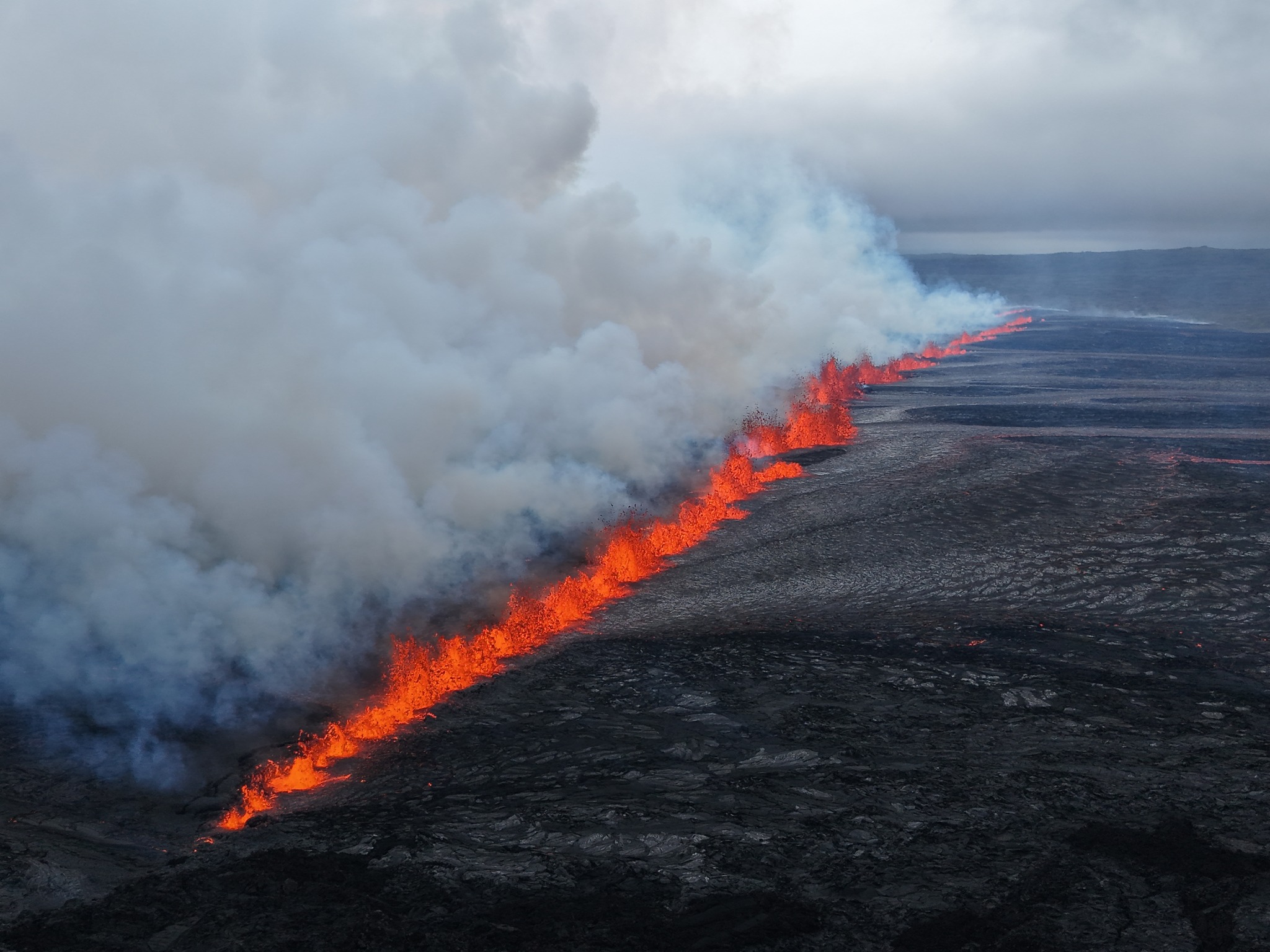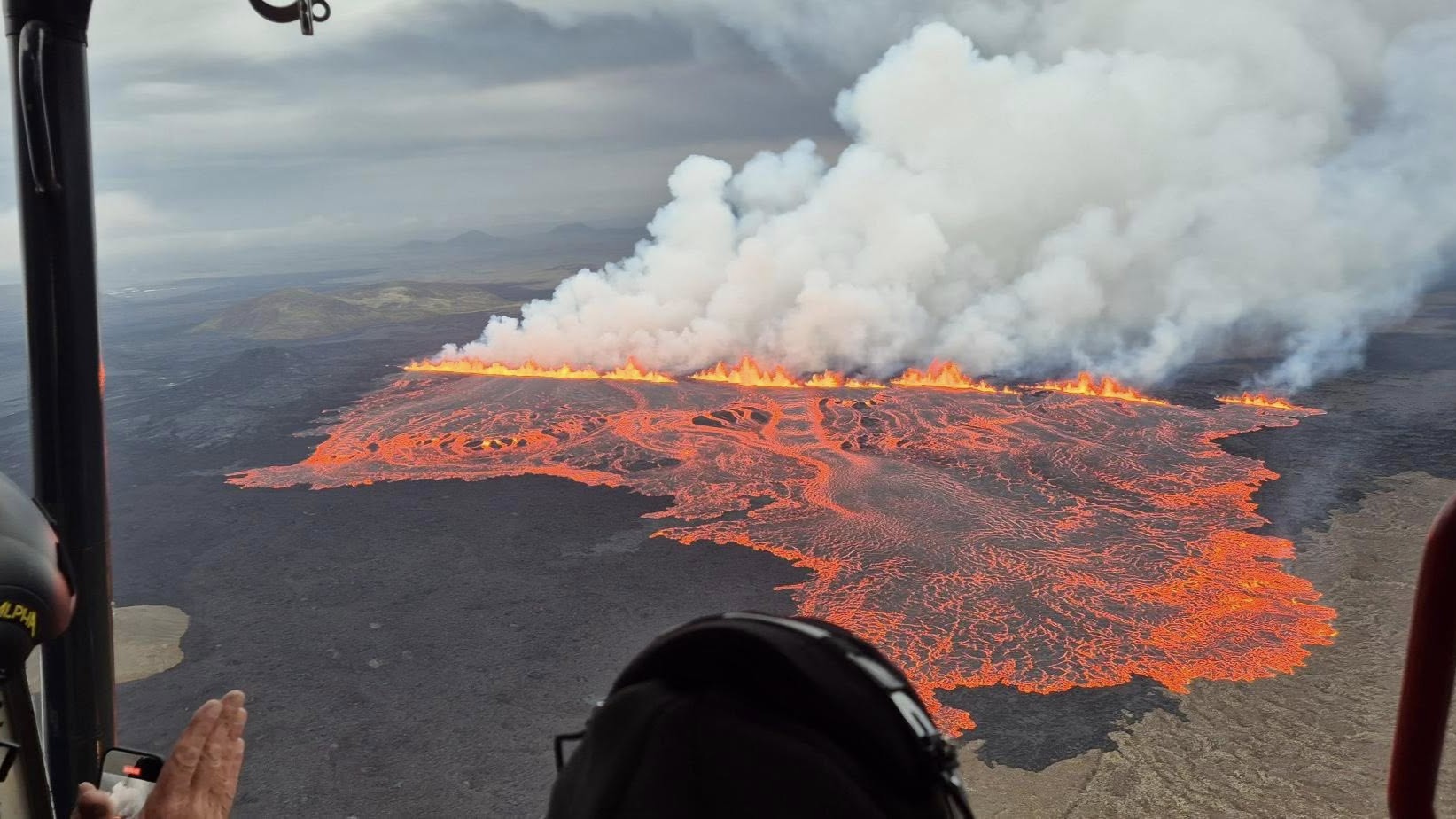A volcanic eruption has sent lava spewing out of a giant fissure on the Sundhnúkur crater row in Iceland.
The fissure opened up on Wednesday (July 16) following a swarm of earthquakes, according to a statement released by the Icelandic Met Office (IMO).
Iceland’s Civil Protection Department shared stunning aerial photos of the eruption on Facebook, showing lava blasting from the fissure like a wall of fire and flooding the landscape.
The “intense earthquake” swarm began in the early hours of Wednesday morning, with the eruption starting at 3.56 a.m. local time, according to the IMO statement. The eruption is ongoing.
The latest observations, reported at midday local time, have revealed that the eruption has spread to a second fissure. The larger fissure is estimated to be around 1.5 miles (2.4 kilometers) long, while the smaller fissure is about 1,600 feet (500 m) long.
Unlike previous eruptions that have hit the area over the last few years, this eruption took place before magma had reached their peak. “Before the eruption began, the amount of magma that had accumulated under Svartsengi was about 2/3 of the amount that erupted from there in the last eruption,” IMO representatives wrote.
Related: Melting glaciers could trigger volcanic eruptions around the globe, study finds
The lava isn’t approaching any infrastructure. However, winds have carried gas pollution from the volcano to some populated areas. Authorities have reported high levels of gas pollution in the municipality of Reykjanesbær, although these are now decreasing, according to the IMO statement. Volcanic eruptions emit sulfur dioxide (SO2) and other matter that can be harmful when inhaled.

The IMO also reports the formation of “witches’ hairs” that are being carried by the wind. “These are tiny glass fibers that form when lava flows cool rapidly and expand,” representatives wrote. “They are light and can travel long distances. Witches’ hairs can cause discomfort to the skin and eyes, and people are therefore urged to be careful outdoors near the eruption sites.”
Located between Stóra-Skógfell and Sýlingarfell on Iceland’s Reykjanes peninsula, the current activity is close in proximity to where magma flows occurred during previous eruptions, according to Iceland’s Civil Protection Department.
This part of southwest Iceland is well known for volcanic activity and has seen a string of similar eruptions in recent years. The latest lava-spewing fissure is dramatic, but they can be much larger. For example, a 2.5-mile-long (4 kilometers) fissure opened up in 2023, spewing enough lava to fill an Olympic swimming pool in 20 seconds.
